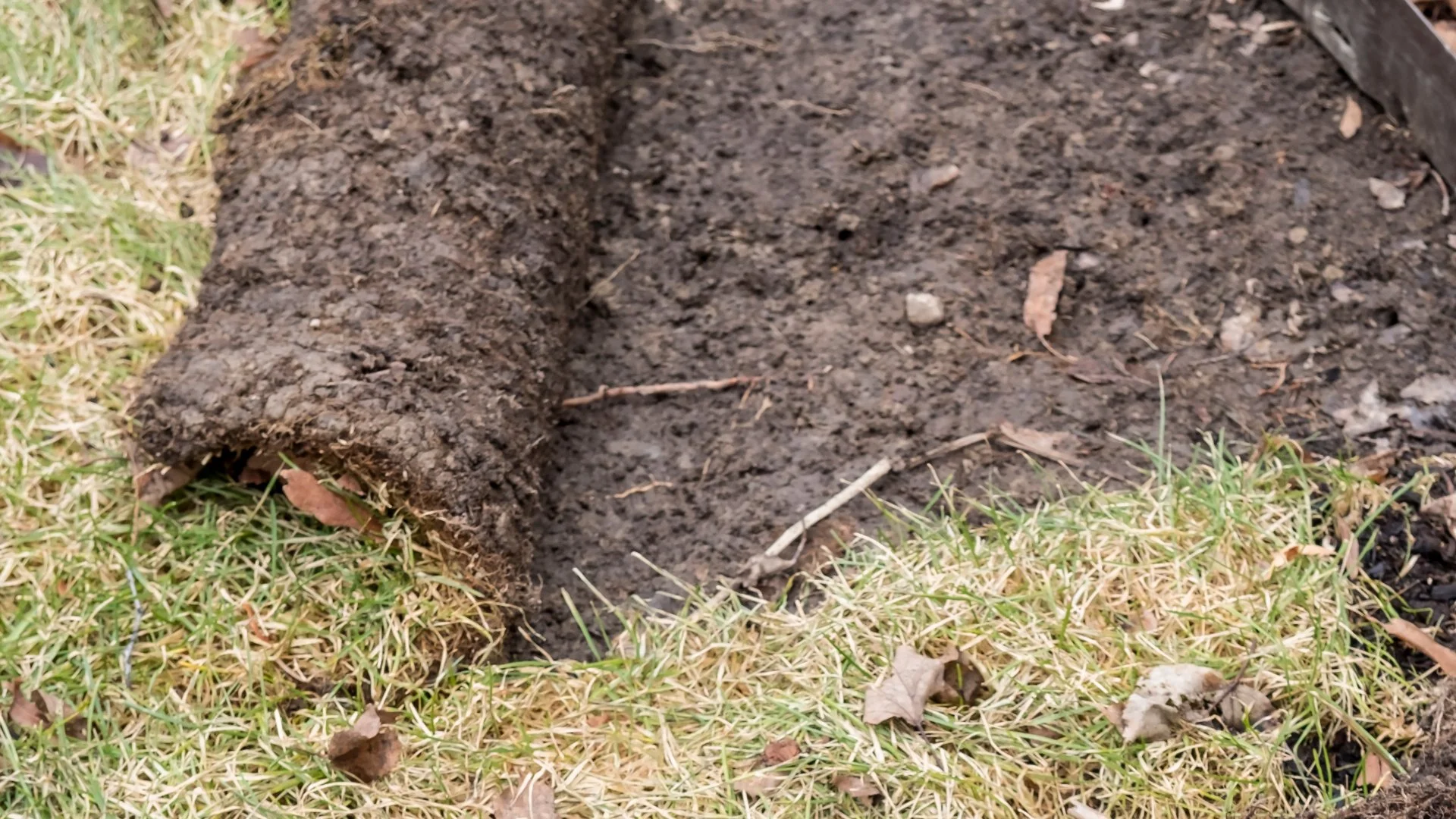Before we know it, it’ll be time to break out the garden tools, hook up the hose, and get our yards ready for the season. Unfortunately, our lawns may not be as enthusiastic as we are. Soil compaction and thatch build-up can leave our lawns looking fatigued, thin, and even bare in places. Soil compaction can also affect how well your lawn can absorb things it needs to thrive. Thankfully, aeration can help relieve your turfgrass of these common afflictions. Learn how to recognize the signs of a worn-out compacted lawn and how aeration and overseeding in spring can help your lawn turn over a new leaf.
Why You Should Add Aeration To Your Lawn Care Services
What Is Aeration
Also known as core aeration or traditional aeration, this treatment is one of the most beneficial and common treatments we perform at Delaware Valley Turf. A specialized tool is used to remove thousands of tiny pieces of earth, known as “plugs.” Don’t worry – these plugs are tiny, so your lawn’s appearance won’t be altered. Once these plugs are removed, they are deposited on the surface, where they will break down naturally over time. By letting the plugs break down, they return nutrients to the soil and replenish your lawn’s nutrient levels.
In addition to opening up the soil and reducing soil compaction, aeration also lessens the impact of thatch build-up. More importantly, all those newly-created holes in the ground will allow oxygen, water, sunlight, and fertilizer to reach down into the root zone of the grass. If the soil was compacted, those things can’t reach the root zone as easily, which is why the grass may look worn out.
What Is Thatch Build-Up And Why You Should Address It
Have you ever noticed a straw-like material in your grass? Maybe you’ve pulled some up when raking leaves? That’s thatch. Essentially, thatch is any dead organic material in your lawn, but its main component is dead grass clippings. Keeping some thatch in your lawn is beneficial. It helps keep moisture in during the driest parts of the year. Unfortunately, when thatch build-up is left unchecked, the thatch layer becomes too thick, and it will have adverse effects. When thatch is too thick, it will smother the turfgrass. And it will speed up the rate of soil compaction.
What Is Soil Compaction
Ideally, the soil should always look like a fresh bag of topsoil: it should be loose and porous, so minerals, water, air, and grassroots can travel freely through it. Unfortunately, this is not always the case. Over time, soil loses its fluffy quality and becomes hard and compacted like concrete. You’ll need to aerate to break it up again when this happens. How quickly soil becomes compacted depends on several factors.
Thatch
As we’ve discussed, allowing thatch to over-accumulate in your lawn will speed up the compaction rate.
Foot Traffic
Lawns that experience a higher rate of foot traffic are more likely to be compacted. Children playing or dogs running around pound the grass, and when that happens repeatedly, it compresses the earth. If you use a riding mower, this could also contribute to soil compaction.
Using Lawn As A Storage Area
If you frequently park your car, motorcycle, trailer, or any other heavy objects on the lawn, this will all compact the soil over long periods of time. In the short term, it will reduce the grass’s ability to spring back and will leave it matted down. Consequently, you may have to repair those areas with an overseeding application.
Symptoms Of Compacted Soil
Excess Puddles Of Water
This is especially true in spring. When all that snow and ice melts and the soil is compacted, it won’t have anywhere to go. Uncompacted soil will absorb all that water. But compacted soil acts like a water-repellant and will create puddles.
Water Run-Off
If your yard is on an incline, you may have noticed a cascade of water. Once again, if the soil is too compacted to absorb the water, the water will naturally flow off the surface and seek the lowest point.
Thin Or Dead Grass
Compacted soil starves grass of nutrients and water and makes it impossible to expand and grow. While other factors create thin or bare areas in your lawn, soil compaction is one of the most common culprits.
Impenetrable Soil
This is the biggest sign that your soil is compacted. If the earth is so tough, not even a screwdriver can dig into it, you have compacted soil.
Why Aerate In Spring
In addition to fall, spring is the best time to aerate. You’ll get rid of obstacles at the beginning of the growing season, so your grass can hit the ground running. Having lawn fertilization done on compacted soil is just throwing money away. Instead, if you aerate before fertilizing, you’ll increase the number of nutrients your grass utilizes. If your soil is compacted, your lawn will be at a major disadvantage. If you’ve ever wondered how the neighbors achieve that lush green carpet so early in the season, it’s likely because they aerated in fall and spring!
Find Professional Aeration And Seeding In Newton Square, PA
Let’s rejuvenate your turfgrass! The aeration and overseeding service provided by Delaware Valley Turf breaks up compacted soil; allows air, water, and nutrients to reach the root zone again; and gives your lawn’s roots a chance to expand properly – making it more resilient against stressors. Let’s get you on our lawn maintenance schedule for spring! Call (610) 328-4170 or leave us a message online here.






Comments (0)
Thanks for your comment!
Thanks for your feedback! Your comments have been successfully submitted! Please note, all comments require admin approval prior to display.
Error submitting comment!
There is a problem with your comment, please see below and try again.